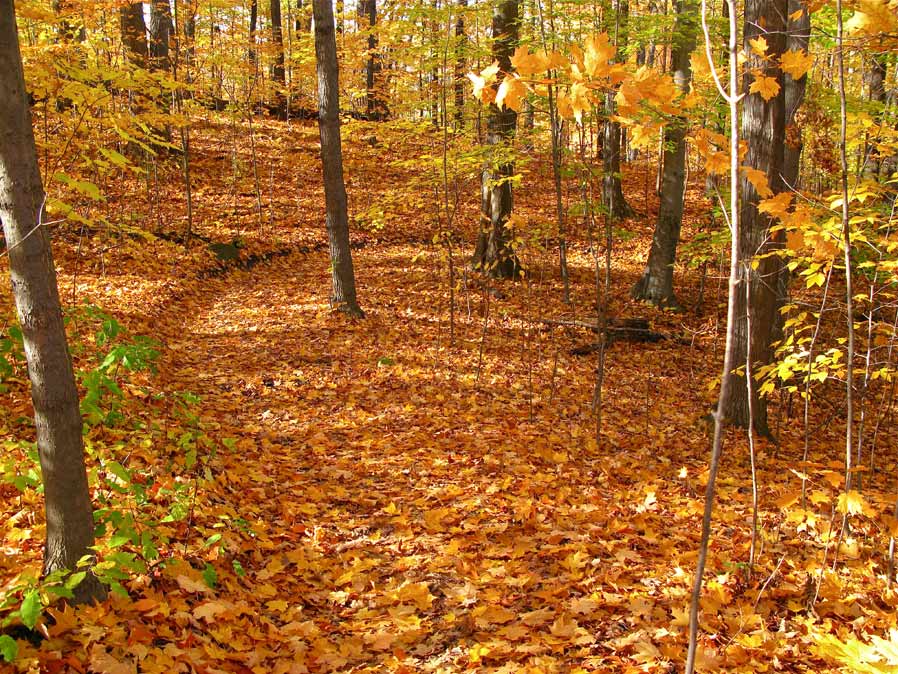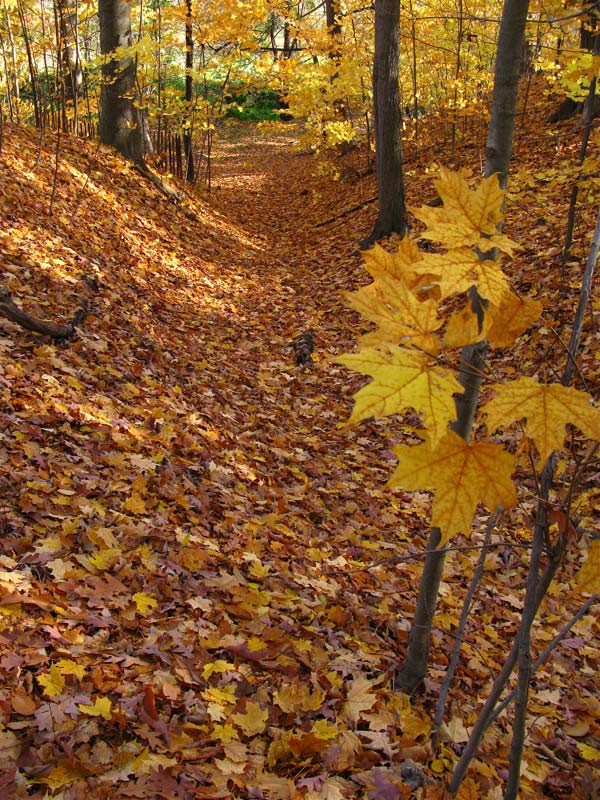Crothers Woods, Wednesday, Oct. 27. A palace in spun gold, head architect, Ma Nature. © BCP 2010
Inspired by the bright autumn sunshine yesterday afternoon, (and surprising t-shirt weather) I took off for Crothers Woods, a part of the Don Valley I have only just begun to explore.
Crothers Woods is a mature forest generally considered to run on both sides of the Don River from Pottery Road in the south to the Leaside Bridge in the north. A couple of weeks ago, I parked at Todmorden Mills and walked to the trail head by Pottery Road, then ascended on some quite vertiginous mountain bike paths that took me to Sun Valley. (More on Sun Valley later.) I never really made it to the main part of Crothers Woods, as I ran out of time.
So Wednesday, I decided to bypass the long hike from Pottery Road, and accessed the woods instead from the Loblaws parking lot just off Millwood Rd. on Redway.
A path in Crothers Woods descending to the valley floor. © BCP 2010
I checked out the map at the top of the trail head, then arbitrarily picked a path heading towards the valley floor. A few steps in from the parking lot, I was surrounded by a golden sea of sugar maples. I felt as if I had stepped into a magic castle where the walls, ceiling and floor were all spun from gold. Here and there, fiery sumacs and a few low-level understory bushes still wearing green, stood out as if they were precious jewels — rubies, garnets and emeralds —- spilling out of a golden treasure chest.
I walked through the woods scarcely able to contain my joy at being in such a place of rare beauty, smack dab in the middle of the city.
But Crothers Woods is known not just for its beauty, but for its rarity as an ecosystem.
The 52-hectare plot is one of the few remaining fragments of Carolinian forest — a type of forest common in the eastern U.S., but rare around Toronto area and the rest of Canada. The Welcome to Crothers Woods plaque at the Loblaws trail head describes the woods to be a beech-maple forest that contains “rare understory plants and old-growth forest features that provide important habitat for many wildlife species.”
The overwhelming majority of the trees in the woods appeared to me, at least, to be sugar maples, (Acer saccharum) wearing shades of gold, orange and harvest yellow. And certainly American beech (Fagus grandifolia) all dressed in bronze, and butternut or white walnut (Juglans cinerea) wearing more bright yellow. Oh. And black oak (Quercus velutina) I think, too, clad in dark brown.
In the next few days, I’ll post some more photos of this magical spot.
© BCP 2010





1 comment